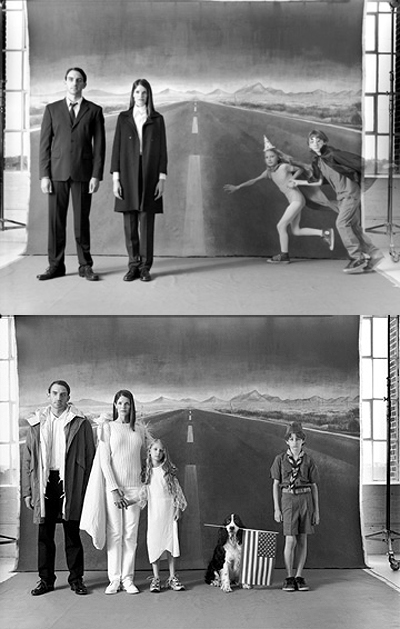
Came across this 1998 Harper's Bazaar article about Helmut Lang while doing some googling at work. (don't ask me why or how). I was struck by how some of his words revealed a somewhat post-modern sensibility beneath the veneer of a modernist.
"I'd been thinking about using the Internet for a long time, so it just seemed theHe seemed to have foreseen the effect the Internet had on how seasonal runway looks are being transmitted, the breaking down of the information monopoly and by extension, the power of the fashion media. Runway looks are available almost instantaneously on the Internet, quickly filtering into various niche blogs and forums, the new fashion cognoscenti.
moment to do it. It also felt right to keep contact with Europe, because it was the
first season we didn't do a show in Paris. We could be global, everyone could
see the clothes at the same time. It's democratic. You know‑his look is
ironic‑modern communication."
-on showing his collection via the internet instead of in fron tof a live audience
""I have no trouble changing the rules...The point is, who has set out the rules?Questioning the structure but still working within the system, subverting it movement by movement. (Upon moving to New York, he showed his collection via the internet in place of a live runway show, singlehandedly moved the New York fashion week 6 weeks ahead of schedule and gave the New York fashion establishment a snub by staying at home on the evening of the CFDA Awards when he won best menswear designer in 2000).
Often it turns out they were set quite a while ago."
-on moving his show 6 weeks ahead of schedule
"seeing the same thing in three situations, and how people make it different...I don't
take what people do with my clothes personally after I've released them. It's about
how people live in the pieces. The other day I saw a guy in one of the techno shirts
we did three years ago. It was completely integrated into what he was wearing and
still looking good. I love that."
-on how people are wearing his clothes
"A lot of what I do is just shaping that or finding new forms that are crossovers, thatUnderstanding and exploiting the semiotics of clothing and reappropriating familiar forms in a new context, not unlike the pomo architects of the 80s but totally avoiding the gaudy and facile reinterpretation.
unconsciously remind you of something. Somewhere in their roots they have the comfort
of something familiar."
-on his design references
If you enjoyed this article, this is might also be worth a read.

No comments:
Post a Comment